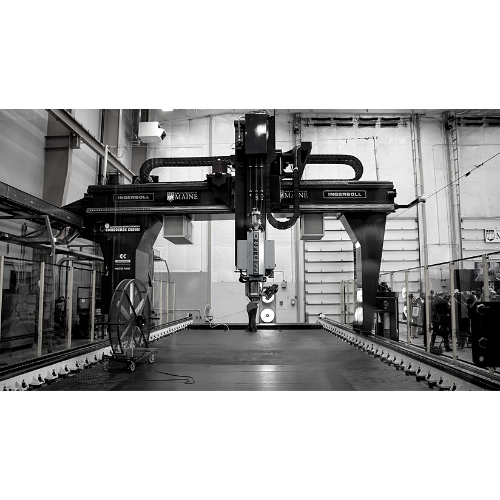| What is the maximum-sized item that can be manufactured using 3D printing technology? |
Maine is famous for making custom boats. But, last fall, a boat called 3Dirigo made things even more exciting. This boat is 7.6 meters long and weighs around 1000 kilograms. It is special because it’s the biggest boat ever made by a 3D printer that uses thermoplastic. The University of Maine’s Center for Advanced Structures and Composite Materials made it. They used the biggest 3D printer in the world to do this and it took them just over 70 hours.
There were even people from Guinness World Records at the boat launch in mid-October. They were there to give out certificates for three new world records. These records were for: the biggest 3D printer that uses polymer, the biggest 3D printed boat (before this, the record was held by an 18 kg rowboat), and the biggest solid 3D printed thing (before this, the record was 725 kg).
This 3D printing project makes Maine a leader in an industry that’s changing fast. It could bring big changes not just for people who build boats, but for other types of manufacturing too. The new printer, made by Ingersoll Machine Tools, is huge. It can print things that are 30.5 meters long, 6.1 meters wide and 3 meters high. This printer is six times bigger than the next biggest 3D printer.
People aren’t expecting to see boats made by 3D printers just yet. But, using 3D printing to make molds for boat parts could make the process faster and better.
The Challenges of 3D Printing a Boat
As impressive as it may sound, the journey to 3D print this boat was no easy feat. Let’s delve into the challenges and complexities of this groundbreaking project.
Size and Complexity
The 3Dirigo’s sheer size and intricate design posed a great challenge. Printing such a large object necessitates a 3D printer with an extensive build volume and robust structural support. Ensuring the boat’s complex design is accurately replicated throughout the printing process demands meticulous attention to detail.
Printing an object of this magnitude required not only a large-scale 3D printer but also innovative engineering solutions to maintain structural integrity during and after printing. The complexity of the boat’s design meant that precision was paramount, and any errors could lead to significant issues.
Material Considerations
The choice of material plays a pivotal role in the project’s success. The 3Dirigo was crafted using thermoplastic, known for its challenges when scaled up. Large-scale 3D printing requires a delicate balance in maintaining consistent temperature and material flow. Large prints are susceptible to warping and deformation, which could compromise the boat’s structural integrity.
Using thermoplastic for such a large 3D print requires extensive material research and development to optimize its performance. Engineers have to address issues related to material flow, cooling, and adhesion to ensure a consistent and reliable printing process.
Print Time
Patience is a virtue in 3D printing, and the 3Dirigo is no exception. It took just over 70 hours to complete the printing process. Printing an object of this size over such an extended period introduces various challenges, including power interruptions, maintenance issues, and maintaining vigilant quality control throughout the marathon printing session.
The extended print time raises logistical concerns and demands robust planning. Continuous monitoring and quality checks are necessary to identify and address any issues that could arise during the 70-hour-long printing process, ensuring that the final product meets the required standards.
Structural Integrity
Boats must endure a wide range of stresses, from the forces of water and waves to potential collisions. Ensuring the structural integrity of a 3D-printed boat, particularly one as large as the 3Dirigo, requires meticulous planning, material selection, and rigorous testing to meet safety and performance standards.
Achieving structural integrity in a 3D-printed boat involves rigorous testing and simulation to ensure that it could withstand real-world conditions. This includes stress testing, water resistance trials, and simulations of potential impacts to verify its durability.
Support Structures
Large 3D prints typically require support structures to prevent sagging or collapsing during printing. Designing and printing these supports as part of the process and subsequently removing them can be time-consuming and labor-intensive.
Designing efficient support structures equivalent to 3Dirigo requires careful consideration. Engineers have to balance the need for adequate support with minimizing material waste and simplifying the removal process post-printing.
Post-Processing
Even after the printing is complete, the 3Dirigo wasn’t ready to set sail. The boat required post-processing steps such as sanding, painting, and assembly of components like motors, propellers, and control systems to make it fully operational.
Post-processing is a critical step to ensure the boat’s functionality and aesthetics. It involves skilled craftsmanship to prepare the boat for its intended purpose and meet the necessary safety standards.
Research and Development
Creating a boat of this size using 3D printing is an experimental endeavor. It entails substantial research and development efforts to optimize the printing process, select suitable materials, and ensure the final product met stringent safety and performance standards.
Extensive research and development efforts are necessary to push the boundaries of 3D printing technology. This includes developing new printing techniques, materials, and quality control procedures specific to large-scale boat production.
Conclusion
While 3D printing has the potential to revolutionize boat manufacturing, the journey to 3D print a boat as large and complex as the 3Dirigo is filled with technical and logistical challenges. Overcoming these hurdles demands expertise, innovation, and significant resources. Nevertheless, as technology continues to advance, we can expect further improvements in 3D printing capabilities for large-scale objects like boats. The 3Dirigo serves as a testament to the endless possibilities that lie ahead in the world of additive manufacturing.
So, welcome to the 3D printing world! What would you like to print in 3D?
Sources: The World’s Largest 3D Printed Boat
